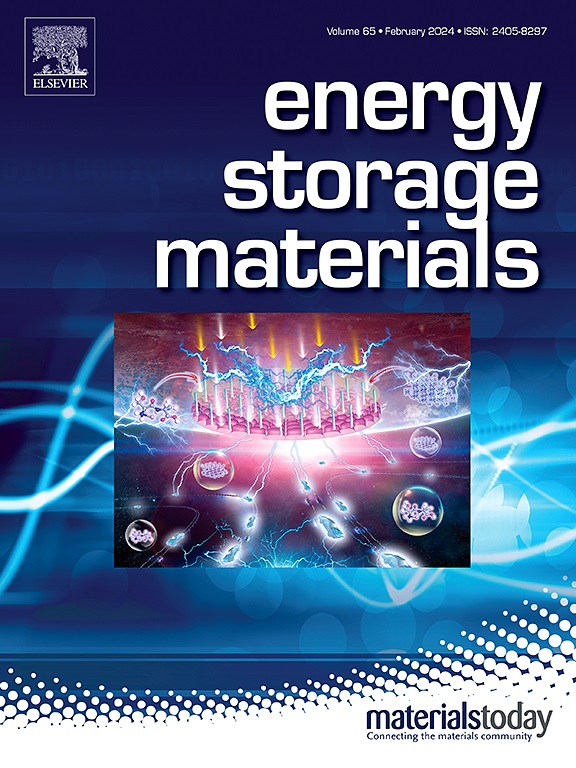Lithophilic metal–ceramic Achieving high durability in lithium-metal batteries via lithophilic metal-ceramic interface engineering
IF 18.9
1区 材料科学
Q1 CHEMISTRY, PHYSICAL
引用次数: 0
Abstract
Highly reactive lithium (Li) requires precise control of nucleation and growth, necessitating stable processing techniques for the fabrication of Li-metal batteries. This study proposes a novel strategy to mitigate Li dendrite formation using a dual-layer protective coating composed of a ceramic (Al2O3) and lithophilic metal (Au) fabricated via a solvent-free transfer printing process. The dual-layer structure consists of a Au layer positioned between Al2O3 and Li metal, where the Al2O3 layer suppresses dendrite growth and promotes uniform Li-ion flux. Meanwhile, the Au layer functions as a seed for Li deposition, reducing the nucleation overpotential of Li deposition through the Au-Li alloy formation, thus enabling uniform Li deposition. Using synchrotron-based operando X-ray computed tomography (CT), we directly visualized and analyzed the Li growth mechanisms within the Al2O3@Au dual-layer structure, confirming its role in facilitating uniform Li deposition and effectively preventing dendrite formation. This structural synergy resulted in superior battery performance. the Al2O3@Au dual-layer demonstrated outstanding performance in NCM811/Li cells (2.6 mAh cm⁻2), achieving a capacity retention rate of over 85 % and Coulombic efficiency exceeding 99.8 % after 150 cycles. This study offers a scalable and practical approach to stabilizing Li metal anodes, thus paving the way for next-generation batteries.
求助全文
约1分钟内获得全文
求助全文
来源期刊

Energy Storage Materials
Materials Science-General Materials Science
CiteScore
33.00
自引率
5.90%
发文量
652
审稿时长
27 days
期刊介绍:
Energy Storage Materials is a global interdisciplinary journal dedicated to sharing scientific and technological advancements in materials and devices for advanced energy storage and related energy conversion, such as in metal-O2 batteries. The journal features comprehensive research articles, including full papers and short communications, as well as authoritative feature articles and reviews by leading experts in the field.
Energy Storage Materials covers a wide range of topics, including the synthesis, fabrication, structure, properties, performance, and technological applications of energy storage materials. Additionally, the journal explores strategies, policies, and developments in the field of energy storage materials and devices for sustainable energy.
Published papers are selected based on their scientific and technological significance, their ability to provide valuable new knowledge, and their relevance to the international research community.
 求助内容:
求助内容: 应助结果提醒方式:
应助结果提醒方式:


